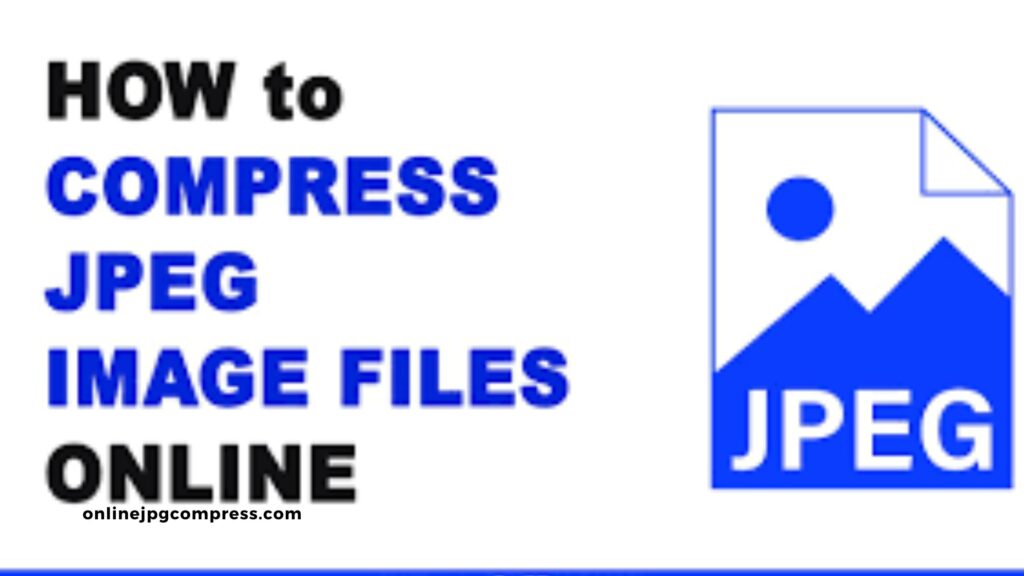Introduction
In the dynamic digital landscape of the United States, where speed and efficiency reign supreme, the importance of optimizing web content cannot be overstated. As online experiences become increasingly visual, the need to compress JPG file emerges as a crucial step in enhancing website performance.
In this comprehensive guide, we’ll delve into the intricacies of compressing JPG files, exploring its significance, benefits, and best practices tailored for users across the United States.
Read this – Compress JPG Mastery: Streamlining Digital Workflows

Understanding the Need for Compressing JPG File
What is JPG Compression? Joint Photographic Experts Group (JPEG or JPG) is a widely used image file format known for its ability to maintain high-quality visuals.
Compression, in the context of JPG files, involves reducing the file size without significantly compromising image quality.
This process is imperative for faster loading times and improved user experience.
The Impact of Large Image Files In the United States, where high-speed internet is the norm, large image files can hinder website loading times.
Slow-loading pages not only lead to a frustrating user experience but can also impact search engine rankings, making compression a critical consideration for website owners and content creators.
Benefits of Compressing JPG File
Improved Website Performance Compressing JPG files contributes significantly to enhanced website performance.
Smaller file sizes translate to quicker loading times, reducing bounce rates and keeping users engaged.
In a competitive online landscape, this can be the key differentiator for retaining visitors and encouraging interaction.
Bandwidth Optimization For users in the United States, where data plans vary and bandwidth considerations are crucial, optimizing image sizes becomes paramount.
Compressed JPG files reduce the amount of data transferred, making websites more accessible to users with limited data plans and ensuring a seamless experience for all.
Enhanced User Experience Quick-loading pages contribute directly to a positive user experience.
In a society where time is of the essence, users appreciate websites that deliver content swiftly.
Compressing JPG files ensures that images load seamlessly, fostering user satisfaction and encouraging prolonged engagement.

Best Practices for Compressing JPG File
Choosing the Right Compression Level Selecting an appropriate compression level is crucial.
Higher compression ratios result in smaller file sizes but may compromise image quality.
Striking the right balance between compression and quality ensures optimal results.
This decision often depends on the intended use of the image and the desired user experience.
Selective Compression Techniques In scenarios where specific details need preservation, selective compression techniques come into play.
Various tools and software allow users to target certain parts of an image for compression.
Ensuring that essential elements remain crisp and clear while the overall file size is reduced.
Image Resizing and Compression Combining image resizing with compression can further optimize file sizes.
This is particularly useful when integrating images into websites or platforms with specific size constraints.
Tools and techniques for resizing and compressing images effectively should be explored for maximum efficiency.
Tools and Software for Compressing JPG File
Online Compression Tools Numerous online tools cater to quick and easy JPG compression.
Websites like TinyPNG, JPEG-Optimizer, and Compressor.io offer user-friendly interfaces for instant image optimization.
These tools are ideal for users seeking a hassle-free compression solution without the need for software downloads.
Offline Compression Software For more advanced compression needs and additional control, downloadable software provides a comprehensive solution.
Programs like Adobe Photoshop, GIMP, and FileOptimizer allow users to fine-tune compression settings according to their specific requirements.
SEO Impact of Optimized Images
Image SEO Best Practices In the competitive digital landscape of the United States, image SEO is integral.
Utilizing descriptive filenames and alt text not only enhances accessibility but also contributes to search engine optimization.
Search engines prioritize well-optimized images, positively influencing the overall ranking of a website.
Loading Speed and SEO Google, the predominant search engine in the United States, emphasizes loading speed as a crucial ranking factor.
Optimized images, achieved through JPG compression, directly contribute to faster page loading times, positively impacting SEO performance.

Conclusion
In conclusion, embracing the practice of compressing JPG files is pivotal for users in the United States aiming to enhance their online presence.
From improved website performance to bandwidth optimization and a superior user experience, the benefits are diverse and impactful.
By adopting best practices, leveraging available tools, and understanding the SEO implications.
Individuals and businesses can ensure their digital content not only meets but exceeds the expectations of users in the fast-paced digital environment of the United States.

1 thought on “Mastering Web Efficiency: The Ultimate Guide to Compressing JPG File in the United States”